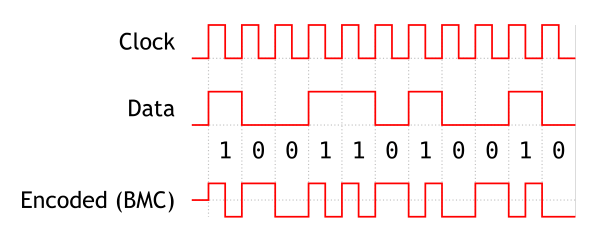2B1Q
Two-binary, one-quaternary (2B1Q) is a line code used in the U interface of the Integrated Services Digital Network (ISDN) Basic Rate Interface (BRI) and the high-bit-rate digital subscriber line (HDSL).[1] 2B1Q is a four-level pulse amplitude modulation (PAM-4) scheme without redundancy, mapping two bits (2B) into one quaternary symbol (1Q). A competing encoding technique in the ISDN basic rate U interface, mainly used in Europe, is 4B3T.
To minimize error propagation, bit pairs (dibits) are assigned to voltage levels according to a Gray code, as follows:
| Dibit | Signal level |
|---|---|
| 10 | +450 mV |
| 11 | +150 mV |
| 01 | −150 mV |
| 00 | −450 mV |
If the voltage is misread as an adjacent level, this causes only a 1-bit error in the decoded data. 2B1Q code is not DC-balanced. Symbol rate is half of data rate.
References
This article is based on material taken from the Free On-line Dictionary of Computing prior to 1 November 2008 and incorporated under the "relicensing" terms of the GFDL, version 1.3 or later.
